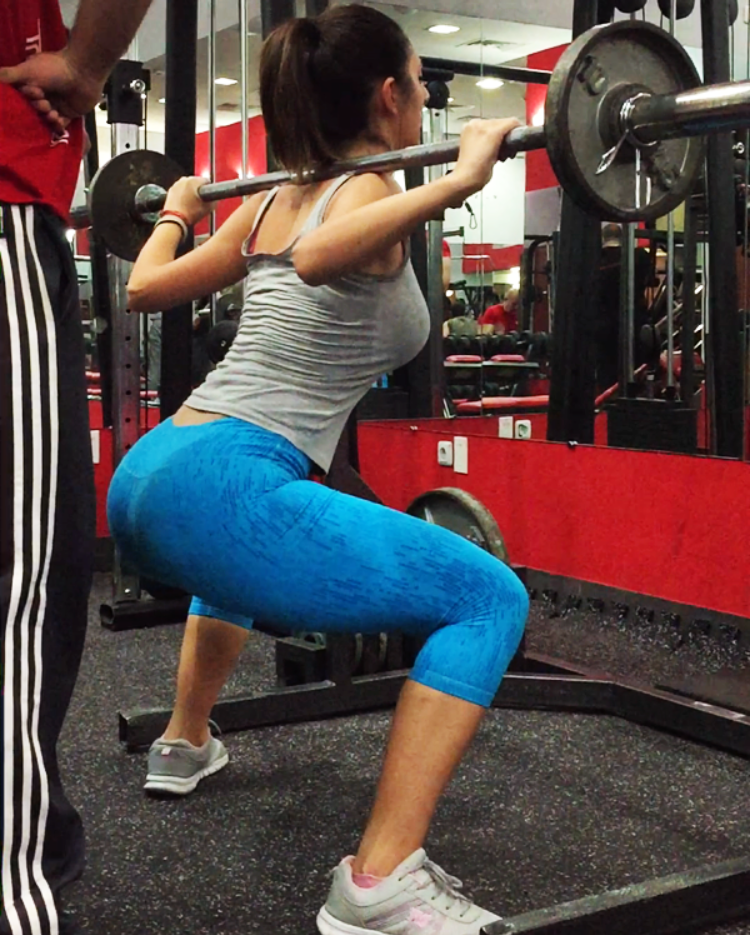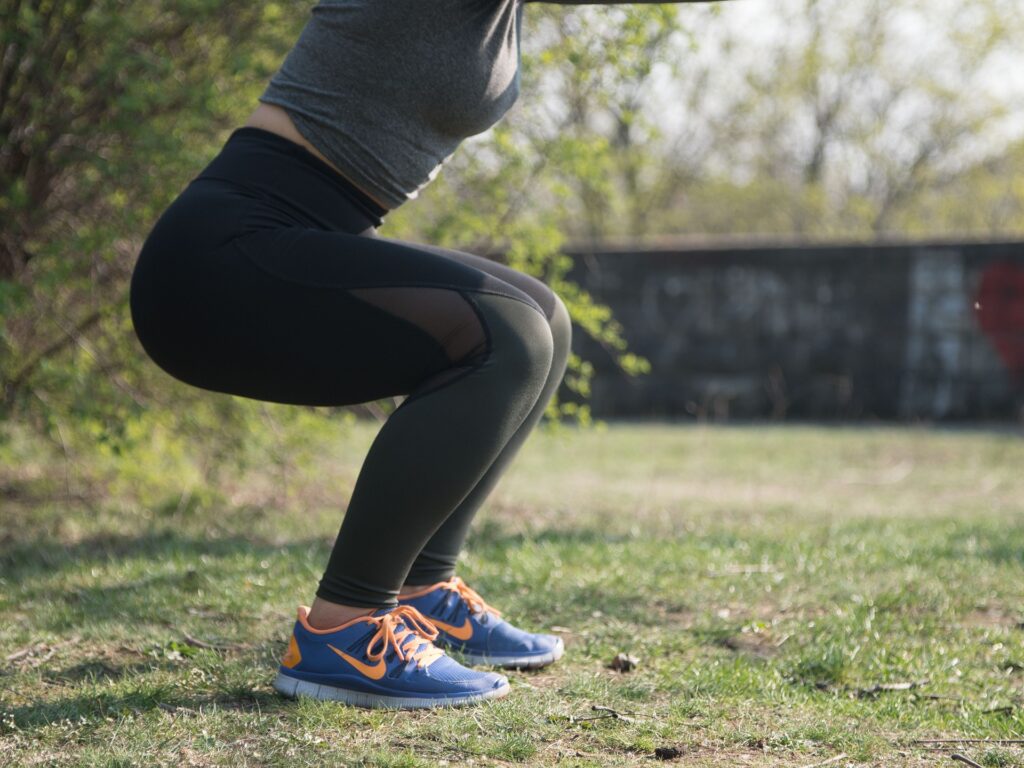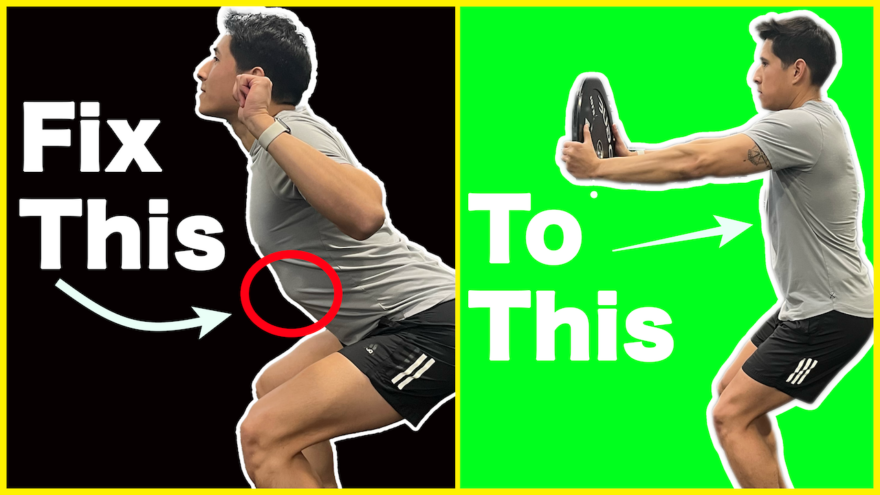Table of Contents
This is how you reduce arching your back
Squats can build MASSIVE legs, but not if you ONLY feel back, hip, and knee pain during.
Are you someone who…
– Can’t squat deep. Like…at all
– Arch your back like CRAZY?
If so, then addressing these issues can help you get so much more out of the squat.
And the fix isn’t just flexing your back and hoping for the best.
Instead, you have to look at the REAL reason why a deep arch in the lower back during squats occurs. Once you know the why, then you can determine the how.
I’ll give you both of those in today’s post.
Check out the post and video below to learn about it.
Why arching during squats is WRONG
It’s often taught to squat with a big arch in your back.

Though arching can improve the load amount lifted, it doesn’t match actual squat biomechanics.
According to this back squat paper, the lumbar spine becomes flexed as soon as a barbell is on your back.
Think about this. The back squat is the least vertical of squats, meaning it will look more arched than say a front squat.
Yet despite this fact, the lumbar spine still rounds, albeit minimally to the naked eye.
Does that mean we should flex the F out of our backs and hope for the best?
WRONG ANSWER FAM!
Though the research shows that low-load spinal flexion is safe, we lack safety data on higher loads. The type of loads we’d squat with.
So what’s the answer?
We have to look at WHY arching occurs in the first place.
Why arching during squats occurs
Back arching is not the only thing happening in the lumbopelvic region during the squat.
The arch is also paired with the following actions:
- Center of mass shifts forward
These actions occur in concert to produce internal rotation. Internal rotation is the action used to put force into the ground. So internal rotation during the squat descent acts to slow this phase down.

Though the descent requires internal rotation, the above movements = excessive braking.
You’ll slow down for sure, but the cost will is reduced movement space and more focal loading on areas we don’t want.
Lumbar flexion/tucking doesn’t work because it only accounts for the lumbopelvic components. It won’t fix rib flaring, abdominal content movement, or shifting the center of mass.
Take it from me. I used to coach THE HECK out of lower back flexion on squats, and it often led to back stretching or discomfort as well.
I had to find a better way.
How to fix arching during squats
The key to reducing the arch = effective bracing.
But this brace is NOT your typical tense the heck out of your abs.
What we’ll use instead is “the stack.”
This strategy takes care of back positioning AND the ribcage and abs.
The easiest way to teach this is by using a reaching squat. Pending which squat you are trying to improve your brace on, you can use the following types:
- Back squat – use a reaching box squat
- All other squats – use a reaching ramp squat
Here’s the reaching box squat:
Here’s the reaching ramp squat:
Here’s how to coach the stack:
- Eyes to the horizon
- Soft knees
- Silent inhale through the nose
- Soft, slow exhale through the mouth
- As you exhale, think about reaching the plate forward and the body moving backward
- Slow squat down and hold the position
With point 5, the body moving backward will depend on which variation you are doing:
- Reaching box squat – hips back towards box
- Reaching ramp squat – torso moves backwards
I would start this movement 4 rounds of 5 breaths, done as your warmup before squatting.
Common faults during these exercises are:
- Keeping the head up or looking down
- Locking the knees out
- Losing ab and ribcage position during the descent
- Forcing the ribs down
If you’ve nailed the static hold, progress to a dynamic version. Here, I’d do 3-4 sets of 6-8 reps.
Here’s an example of a reaching box squat:
If these drills become easy, then you’re ready to apply this to the squat of your choice.
It will be harder to stack with maximal loads right from the get-go, so practice in mid to higher rep ranges first.
Sum up
If you can stack during these moves, you’ll get WAY more load into the legs on your squats, and way less pain.
To recap:
- It’s normal for the back to be flexed, not arched, during squats
- Arching doesn’t occur in isolation, there are ribcage, abdominal, and pelvic components
- These components occur to brake on the squat
- Focusing on stacking to brace during a squat can minimize these issues
How’d your squat feel after trying these movements? Comment below and let us know

